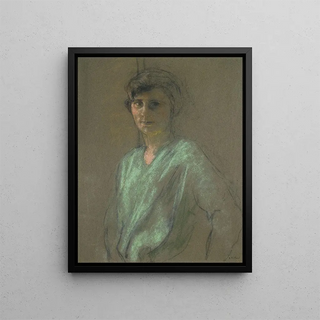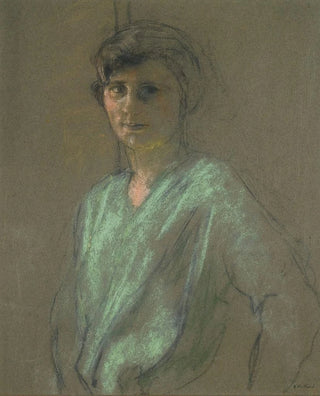Art print | Portrait of Dirne Montanet - Édouard Vuillard


View from behind

Frame (optional)
The "Portrait of Dirne Montanet" by Édouard Vuillard is a work that transcends the simple frame of a portrait to immerse the viewer in an intimate and vibrant atmosphere. Created at the end of the 19th century, this emblematic piece of the Nabi movement embodies the very essence of everyday life through the lens of a unique artistic sensitivity. The scene, which highlights a female figure within a carefully arranged interior, invites contemplation and reflection on the nature of human relationships and the emotions they evoke. Vuillard, through his delicate approach and subtle use of colors, manages to create a palpable connection between the artwork and the observer.
Style and uniqueness of the work
Vuillard's style is distinguished by meticulous attention to detail and a color palette that evokes the softness and warmth of shared moments. In "Portrait of Dirne Montanet," the artist skillfully plays with patterns, textures, and light to bring his subject to life. The shades of blue, pink, and yellow blend harmoniously, creating an atmosphere that is both serene and dynamic. The background, rich in decorative motifs, envelops the character in a visual cocoon that emphasizes her importance while hinting at the context of her existence. This interaction between the subject and its environment demonstrates Vuillard's ability to capture not only physical appearance but also the very essence of Dirne Montanet's personality.
The artist and his influence
Édouard Vuillard, a prominent member of the Nabi group, played a crucial role in the evolution of modern art. His interest in depicting interiors and scenes of daily life paved the way for new artistic approaches that would influence generations of artists. Moving away from academic conventions, Vuillard explored themes such as intimacy, memory, and perception. His work was also marked by a strong connection to literature and poetry, adding a narrative dimension to his works. By focusing on the psychology of characters and their interactions, he was able to create compositions that still resonate today with great emotional power.
A wall decoration of

Matte finish

View from behind

Frame (optional)
The "Portrait of Dirne Montanet" by Édouard Vuillard is a work that transcends the simple frame of a portrait to immerse the viewer in an intimate and vibrant atmosphere. Created at the end of the 19th century, this emblematic piece of the Nabi movement embodies the very essence of everyday life through the lens of a unique artistic sensitivity. The scene, which highlights a female figure within a carefully arranged interior, invites contemplation and reflection on the nature of human relationships and the emotions they evoke. Vuillard, through his delicate approach and subtle use of colors, manages to create a palpable connection between the artwork and the observer.
Style and uniqueness of the work
Vuillard's style is distinguished by meticulous attention to detail and a color palette that evokes the softness and warmth of shared moments. In "Portrait of Dirne Montanet," the artist skillfully plays with patterns, textures, and light to bring his subject to life. The shades of blue, pink, and yellow blend harmoniously, creating an atmosphere that is both serene and dynamic. The background, rich in decorative motifs, envelops the character in a visual cocoon that emphasizes her importance while hinting at the context of her existence. This interaction between the subject and its environment demonstrates Vuillard's ability to capture not only physical appearance but also the very essence of Dirne Montanet's personality.
The artist and his influence
Édouard Vuillard, a prominent member of the Nabi group, played a crucial role in the evolution of modern art. His interest in depicting interiors and scenes of daily life paved the way for new artistic approaches that would influence generations of artists. Moving away from academic conventions, Vuillard explored themes such as intimacy, memory, and perception. His work was also marked by a strong connection to literature and poetry, adding a narrative dimension to his works. By focusing on the psychology of characters and their interactions, he was able to create compositions that still resonate today with great emotional power.
A wall decoration of






